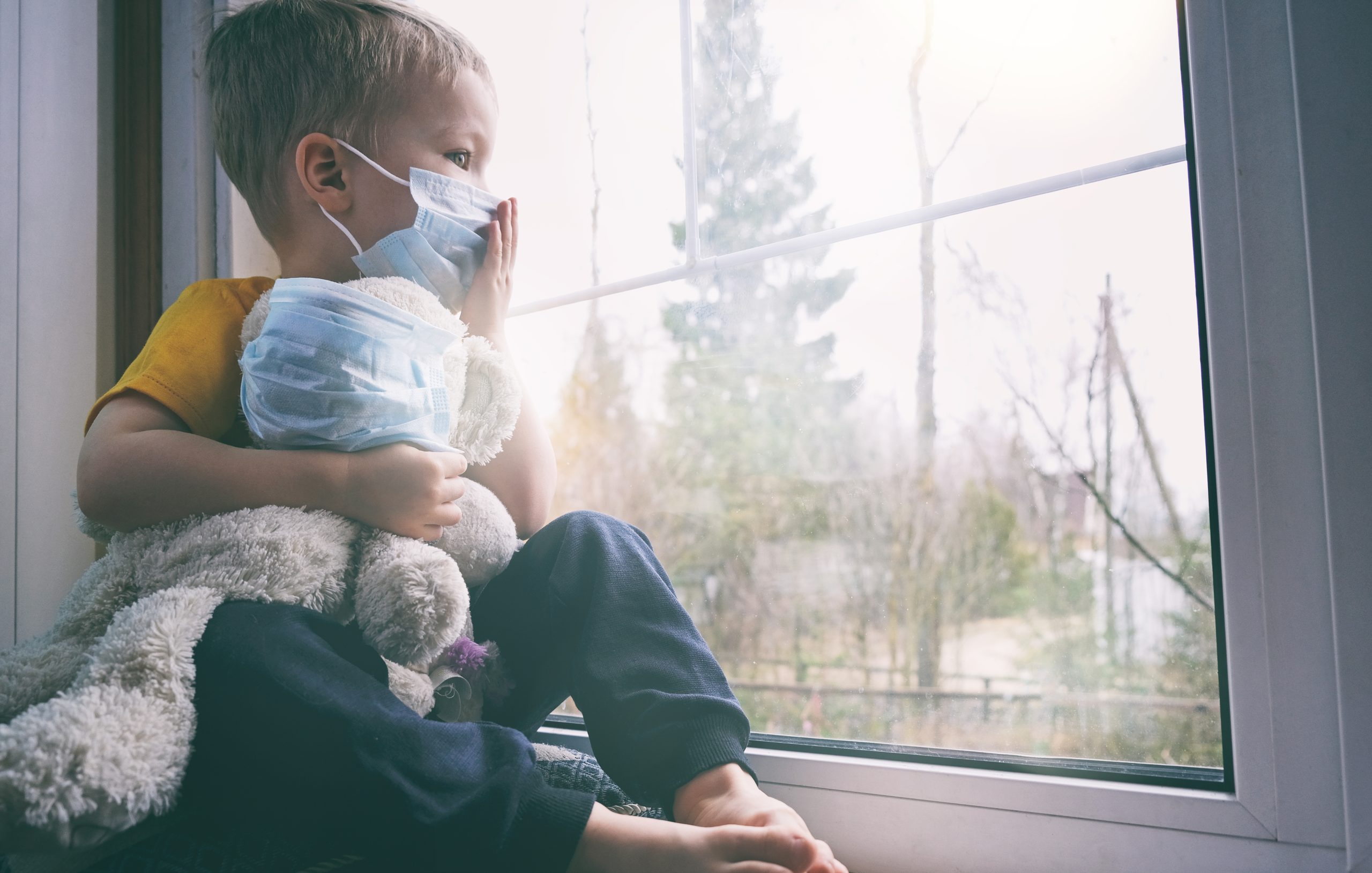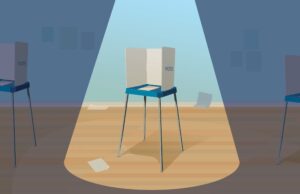July 9, 2020
The Parents are Not All Right: The Experiences of Parenting During a Pandemic
Findings from the AEI COVID-19 and American Life Survey

The coronavirus outbreak has disrupted nearly every facet of American life, but parents with children at home, particularly parents with full-time jobs, have been uniquely affected. Nearly 64 million Americans are living with children under age 18.[1] Many, if not most, of these parents depend on public schools, private schools, and day cares to help educate their children and provide childcare support. But the coronavirus outbreak destroyed this crucial support system by forcing schools and day cares to close or offer remote-only options. A recent American Enterprise Institute report finds that 67 percent of public school districts nationwide canceled in-person classes in mid-March, transitioning to virtual education with day care centers largely following public school systems’ lead.[2] The upshot: Parents working 40-hour-a-week jobs suddenly became required to provide an additional 40 hours of childcare and schooling. This survey paints a grim picture of how parents are coping with the added responsibilities and pressures of raising children during a pandemic.
Parents Express Greater Concern About COVID-19
Although the preponderance of medical evidence suggests children are not as susceptible to contracting COVID-19, parents generally express higher levels of concern about the coronavirus pandemic and specifically the possibility of a family member becoming infected. A majority of Americans say they are at least somewhat concerned that a family member could contract COVID-19. However, Americans with children under age 18 are more likely to say they are very worried about a family member becoming infected with COVID-19 than are those without young children (28 percent vs. 19 percent). Mothers generally express more concern than fathers do. Nearly one-third (32 percent) of mothers say they are very worried that a household member could contract COVID-19, compared to 23 percent of fathers.
Even though many parents are struggling to balance childcare and workplace responsibilities, few parents report feeling completely comfortable having their children return to day care or school. Only about one in four parents (24 percent) say they would be comfortable sending their child or children back to school or day care. More than three-quarters (76 percent) report they are at least somewhat uncomfortable with the idea, including half (50 percent) of all parents who say they are very uncomfortable.
With returning to school, mothers express far greater levels of discomfort than fathers do. Close to six in 10 (56 percent) mothers with children living at home say they would be very uncomfortable sending their children back to day care or school, compared to 42 percent of fathers.
Black parents are also somewhat more uncomfortable than white parents are about the prospect of their children returning to school and day care. Fifty-seven percent of black parents, compared to 45 percent of white parents, say this would make them very uncomfortable.
Parents are somewhat more comfortable with the idea of taking their children to outdoor play spaces, such as parks and playgrounds, although a significant number voice some degree of discomfort. Four in 10 (40 percent) parents say they would be at least somewhat comfortable taking their children to a park or playground, while 60 percent say they would not be comfortable with this.
Again, there are substantial differences between parents’ views by gender and race. Mothers are twice as likely as fathers (42 percent vs. 21 percent) and black parents are about twice as likely as white parents (48 percent vs. 25 percent) to say they would feel very uncomfortable taking their children to a park or playground.
A Tale of Two Households: How Parents and Nonparents Spend Their Time
No American has managed to avoid being affected by the coronavirus outbreak, although how households are managing the social, financial, and personal challenges vary. The pandemic lifestyle of parents and nonparents differs substantially. With children spending much more time at home, parents are bearing the brunt of managing all the increased activity and the mess that comes with it. More than four in 10 (42 percent) parents report doing at least three hours of household chores or cleaning, on average, each day. Americans without children living at home spend significantly less time cleaning: 24 percent say they spend at least three hours a day. A majority (55 percent) of Americans without children in their household report spending less than two hours doing household work, compared to 37 percent of parents.
Parents with young children report doing considerably more childcare than parents with older children do. Forty-three percent of parents with young children (defined as age 5 or younger) say they do at least four hours of childcare each day. Only 26 percent with older children say they do at least four hours of childcare daily. For parents with young children, the childcare workload is nearly the same between fathers and mothers.
Americans without children in their households also report engaging in more leisure activities. More than four in 10 (42 percent) Americans without children report watching four or more hours of television a day. Twenty-nine percent of parents report this amount of television or video watching.
Reading for pleasure is also a more common activity in households without children. Thirty-seven percent of Americans without children in their home report spending at least an hour a day, on average, reading a book for pleasure. Significantly fewer parents (28 percent) report reading this much.
However, with getting exercise or spending time outside, there are no differences between parents with children at home and those without. Roughly two-thirds of parents and those without children at home say they spend at least 30 minutes a day, on average, walking around their neighborhood. Similar numbers of parents and nonparents say they spend as much time exercising.
Not surprisingly, Americans with children in their household also feel much more harried. While stories abound of pandemic boredom or individuals developing new hobbies, such as baking or just watching a lot of Netflix, households with children do not have the same amount of free time. Few parents feel they have enough time for themselves let alone time enough to take on new activities and interests. More than half of parents (52 percent) feel they do not have sufficient time for themselves, a feeling shared by 28 percent of Americans without children. Moreover, parents with young children express this feeling even more often, with 58 percent of parents with children under age 5 reporting having this feeling at least a few times a week.
Although a significant number of parents express discomfort about hosting friends or family members at their home, most are taking advantage of video conferencing technology to stay connected with their friends and family virtually. In fact, compared to Americans without children at home, parents with children at home are more likely to connect with family members through video calls. Nearly three-quarters (72 percent) of parents report having a video call with family members or friends in the past week. Among Americans without children at home, slightly more than half (54 percent) say they had a video conference with friends or family members.
The Mental Health Cost of Parenting During a Pandemic
It is difficult to fully assess the mental health toll the pandemic, the financial fallout, and social isolation are having on our collective mental health. The survey reveals that many Americans express feelings of isolation, loneliness, exhaustion, and being overwhelmed. But these feelings are not experienced evenly across society. It appears that parents in households with children are struggling with the pandemic more so than those households without children, and those with younger children express these feelings to an even greater degree.
Although parents living in households with children under age 18 are less likely to be physically alone than other Americans are, they are significantly more likely to feel lonely and isolated as the pandemic drags on. More than four in 10 (42 percent) parents report feeling lonely at least a few times a week. In contrast, a little over one-third (35 percent) of Americans who do not have parental duties claim to have felt lonely a few times or more.
Depression is more frequently expressed by parents than those without children living with them. Close to half (44 percent) of parents say they feel depressed a few times a week or more often. Among those without children, 32 percent report feeling depressed at least a few times a week.
Finally, the sense of feeling overwhelmed is something found more commonly in households with children than those without. Half (50 percent) of parents report having cried due to feelings of stress or frustration at least once in the past week. In contrast, only one-third (33 percent) of Americans without children at home say they cried in the past week. About two-thirds (66 percent) say they have not done this.
The Mother-Father Divide
There are nontrivial gender disparities with how American parents are responding to COVID-19 and social distancing requirements, which cannot be ignored. Women who have children are not faring well at all. Americans living in households without children are far less likely to report feeling overwhelmed or to exhibit signs of emotional distress and feelings of loneliness, but women express these feelings far more frequently than men do. Close to half (49 percent) of mothers say they feel lonely or isolated at least a few times a week, compared to 36 percent of fathers. More than half (51 percent) of mothers say they have felt depressed at least a few times over the past week, while 35 percent of fathers report these feelings as often. Feeling socially isolated or lonely is also more common among mothers.
There is a substantial difference in the amount of household work reported by mothers and fathers. Nearly half (47 percent) of mothers say they spend at least three hours a day on housework, compared to 36 percent of fathers. Perhaps not surprisingly, mothers are also more likely to report feeling like they have little time for themselves. Sixty percent of mothers say they do not have time for themselves, compared to just 41 percent of fathers.
When it comes to childcare responsibilities, there is much more modest gap between the time put in by fathers and mothers. Nearly half (46 percent) of parents, including 50 percent of mothers and 44 percent of fathers, say they spend at least three hours a day engaged in childcare or homeschooling activities. Notably, there is no gender gap in households with young children. Fathers and mothers of young children report spending a similar amount of time on childcare. Roughly six in ten mothers (58 percent) and fathers (61 percent) of young children report spending at least three hours a day on childcare activities or school work.
Low-Income Parents and Single Parents Are Struggling
The coronavirus outbreak has decimated the American economy, leaving as many as 17.75 million out of work.[3] But the economic devastation has not been evenly distributed across American society. A recent AEI survey report found that black and Hispanic families are facing more grievous financial turmoil than white families are as a result of the economic contraction.[4] Households with children are also in greater financial peril than those without children at home. Nearly half (49 percent) of parents with children living at home say they are somewhat or very worried about paying their rent or mortgage. Substantially fewer Americans without children at home (31 percent) share this concern. One-quarter (25 percent) of parents say they have had trouble paying for food since the coronavirus outbreak began in February, an experience shared by only 13 percent of those without children. Finally, more than four in 10 (41 percent) parents report that their household income has declined in recent months.
Parents in low-income households with fewer financial resources are struggling to meet the emotional and personal demands of COVID-19 life. A majority (57 percent) of parents living in households earning less than $30,000 per year report feeling lonely or socially isolated at least a few times in the past week. In contrast, one-third (33 percent) of parents with household incomes of at least $100,000 report feeling lonely as often. Similarly, 60 percent of low-income parents say they felt depressed at least a few times in the past seven days, compared to 32 percent of parents in households with annual incomes in excess of $100,000. Finally, most (57 percent) parents living in low-income households report having cried multiple times in the past week due to feeling frustrated or overwhelmed. Only 12 percent of parents in high-income households express this feeling as frequently.
In addition to the stress that comes with financial insecurity, low-income parents have fewer options to outsource childcare responsibilities. As a result, parents in households that earn less than $30,000 per year are spending significantly more time on childcare than those in upper-income households are. Half (50 percent) of low-income parents — including 47 percent of low-income mothers — say they spend at least three hours a day on childcare. Fewer (39 percent) parents in higher-earning households spend at least three hours a day performing childcare activities.
Single-Parent Households
Perhaps no family type has been more affected by the shuttering of schools, summer camps, and day care centers than single-parent households. Compared to parents in two-parent households, single parents are experiencing far greater levels of emotional distress. Single parents are more likely than parents in two-parent households to feel lonely or isolated (54 percent vs. 38 percent), to feel depressed (57 percent vs. 38 percent), or to have cried because they were overwhelmed or frustrated (49 percent vs. 25 percent) at least a few times over the past week.
Conclusion
At this point, many parents are at the breaking point. Conservative estimates suggest that parents with children enrolled in day cares or schools have been doing full-time seven-day-a-week childcare while holding down full-time jobs for at least 12 weeks — a full quarter of a year. That parents, particularly those who have young children and are financially vulnerable or in solo caregiving roles, are struggling is not likely to surprise many, but the degree to which parents are suffering has not been fully examined or explored. This national snapshot shows parents struggling with the emotional and financial burdens of raising children during a pandemic. Mothers appear to be bearing a larger share of the burden and may face greater adverse consequences in their careers as a result. Even before the recent COVID-19 flare-up across the country, parents remain concerned about the safety of sending children back to school or childcare centers. Despite evident concerns about safety, overworked and stressed-out parents may put aside their fears to reach for the lifeline schools and day care centers offer.
Notes
[1] US Census Bureau, “Table A3. Parents With Coresident Children Under 18, by Living Arrangement, Sex, and Selected Characteristics: 2019,” October 16, 2019, https://www.census.gov/data/tables/2019/demo/families/cps-2019.html.
[2] Nat Malkus, Cody Christensen, and Lexi West, “School District Responses to the COVID-19 Pandemic: Round 1, Districts’ Initial Responses,” American Enterprise Institute, April 7, 2020, https://www.aei.org/research-products/report/school-district-responses-to-the-covid-19-pandemic-round-1-districts-initial-responses/.
[3] US Bureau of Labor Statistics, “Table A-1: Employment Status of the Civilian Population by Sex and Age,” June 5, 2020, https://www.bls.gov/news.release/empsit.t01.htm.
[4] Daniel A. Cox, “Hardship, Anxiety, and Optimism: Racial and Partisan Disparities in Americans’ Response to COVID-19,” American Enterprise Institute, June 16, 2020, https://www.aei.org/research-products/report/hardship-anxiety-and-optimism-racial-and-partisan-disparities-in-americans-response-to-covid-19/.
Survey Methodology
The survey was designed and conducted by the American Enterprise Institute. Interviews were conducted among a random sample of 3,504 adults (age 18 and up) living in the United States, including all 50 states and the District of Columbia. Interviews were conducted both online using a self-administered design and by telephone using live interviewers. All interviews were conducted among participants using a probability-based panel designed to be representative of the national US adult population run by NORC at the University of Chicago. Panel participants without Internet access, which included 405 respondents, were interviewed via telephone by professional interviewers under the direction of NORC. Interviewing was conducted between May 21 and June 5, 2020.
Weighting was accomplished in two separate stages. First, panel base weights were calculated for every household based on the probability of selection from the NORC National Frame, the sampling frame that is used to sample housing units for AmeriSpeak.[i] Household level weights were then assigned to each eligible adult in every recruited household. In the second stage, sample demographics were balanced to match target population parameters for gender, age, education, race and Hispanic ethnicity, and division (US Census definitions), housing type, and telephone usage. The telephone usage parameter came from an analysis of the National Health Interview Survey. All other weighting parameters were derived from an analysis of the US Census Bureau’s Current Population Survey. The sample weighting was accomplished using an iterative proportional fitting (IFP) process that simultaneously balances the distributions of all variables. Weights were trimmed to prevent individual interviews from having too much influence on the final results.
The use of survey weights in statistical analyses ensures that the demographic characteristics of the sample closely approximate the demographic characteristics of the target population. The margin of error for the survey is +/- 2.3 percentage points at the 95% level of confidence. The design effect for the survey is 1.93.
[i] The National Frame is representative of over 97 percent of U.S. households and includes additional coverage of hard-to-survey population segments, such as rural and low-income households, that are underrepresented in other sample frames. AmeriSpeak uses U.S. mail notifications, NORC telephone interviewers, and in-person field interviewers to recruit panel households.








